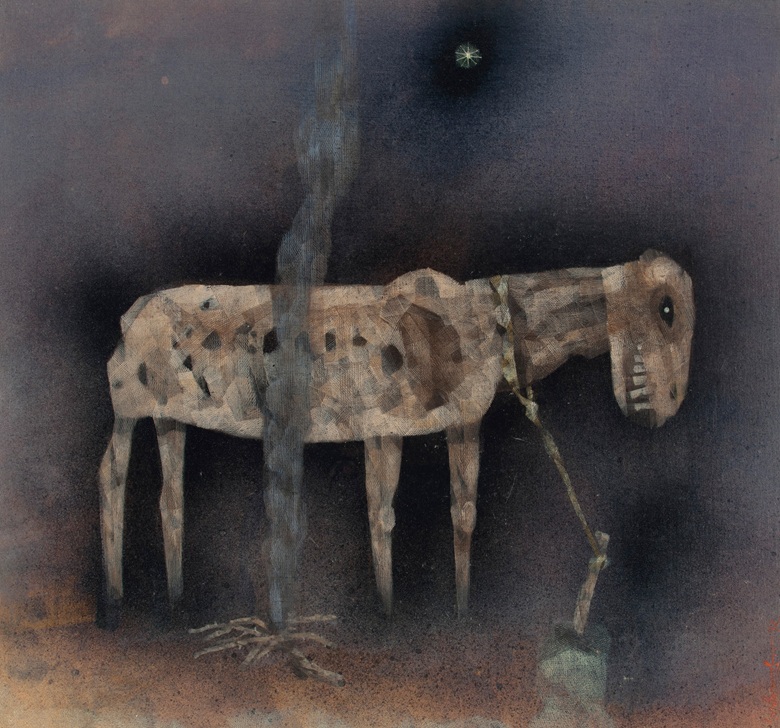
The Role of Texture, Form, and Movement in Vikash Kalra’s Signature Art Paintings
In the realm of contemporary Indian art, Vikash Kalra has carved a niche with his evocative art paintings that defy conventions and embrace raw expression. His work is a compelling blend of chaos and harmony, abstraction and intention, which sets him apart in a landscape of modern visual art. A closer look at his oeuvre reveals that texture, form, and movement are the three critical pillars that define the soul of his art paintings.
This blog explores how these elements are not just stylistic choices but foundational to the emotional and visual impact of Vikash Kalra’s art paintings.
Texture The Physical Emotion in Kalra’s Art Paintings
Texture is more than a visual tool in Vikash Kalra’s art paintings—it is an emotional language. His canvas is often richly layered with mixed media, impasto, and intentional abrasions that give the work a tangible, almost sculptural presence. Texture becomes a way of engaging viewers beyond just the eye—it draws them in physically and emotionally.
Kalra often applies paint with tools beyond the brush—palette knives, sponges, and even his hands. This results in art paintings that feel alive, as though they are breathing stories into the viewer’s space. The tactile surface invites curiosity and introspection. The rough edges, uneven strokes, and built-up surfaces speak of the rawness of human emotion—pain, joy, chaos, calm.
In many of his works, the texture suggests a narrative. The accumulation of layers may represent time, memory, or transformation. The act of adding and removing layers is symbolic of how we construct and deconstruct identity—something Kalra’s art paintings are deeply engaged with.
Form: Abstract Yet Grounded in Reality
While Vikash Kalra’s work is often described as abstract, form plays a critical role in giving his art paintings structure and rhythm. His figures may not be anatomically correct, but they are instantly recognizable in their emotion and movement. Kalra bends and reshapes the human form to serve his expressive goals, often elongating limbs or distorting faces to evoke psychological states.
In Kalra’s universe, form is fluid. It often borders on the surreal, evoking a dream-like quality while remaining rooted in everyday emotion. His forms are not about perfection; they are about truth—raw, vulnerable, unfiltered truth. Each line, curve, or distortion serves a deeper narrative function.
His approach to form is also deeply philosophical. Kalra views the human body as both a container and a transmitter of energy. His art paintings showcase figures that are almost vibrating with inner motion, their forms dissolving or emerging from the canvas. These forms interact with one another in ways that reflect both conflict and unity, creating layers of meaning that reward repeated viewings.
Movement: The Pulse of Kalra’s Art Paintings
Movement is perhaps the most dynamic element in Kalra’s art paintings. His works often seem to be in a state of flux, resisting stillness. The brushstrokes swirl, dart, and collide across the canvas, mimicking the restless energy of the human mind and spirit. Whether depicting human figures, urban chaos, or dream-like abstractions, Kalra infuses each piece with a kinetic force that feels almost cinematic.
This sense of motion is not accidental. Kalra is influenced by the ever-changing rhythms of life—urban chaos, spiritual ecstasy, psychological upheaval. These influences manifest in his art paintings through directional lines, overlapping layers, and an intuitive use of space. His movement is not just visual but emotional. One can almost hear the music or feel the vibration in the energy of his compositions.
Many of his pieces demonstrate what can be described as “visual jazz”—improvisational, rhythmic, and deeply emotive. There’s a spontaneity in his movement that reflects his intuitive process. It is this energetic flow that keeps his art paintings from becoming static representations; instead, they are ongoing experiences that evolve with the viewer.
The Interplay of the Three Elements
What makes Vikash Kalra’s work particularly compelling is how texture, form, and movement do not operate in isolation. Instead, they interact with and reinforce one another to create complex, multi-dimensional art paintings.
For example, a single textured surface may serve as both background and boundary for a form in motion. A distorted figure may blend into a swirl of paint, blurring the line between form and movement. The texture may suggest motion, while the form provides emotional grounding. This synergy is what makes Kalra’s art paintings both challenging and rewarding—they are not meant to be consumed quickly but experienced deeply.
Emotion Through Aesthetic Intelligence
The combination of texture, form, and movement gives Kalra’s art paintings an emotional gravity that is hard to ignore. These elements become metaphors for human complexity. His work is never about aesthetic beauty alone—it is about truth, turmoil, and transcendence.
His art paintings often echo with existential questions. The figures, though abstract, reflect universal emotions—despair, longing, joy, enlightenment. The movement may suggest struggle or spiritual release. The texture may represent layers of lived experience. Together, they form a visual language that speaks to the soul.
Why Kalra’s Art Paintings Stand Out
In a world saturated with digital art and visual overload, Vikash Kalra’s art paintings stand out for their authenticity. They resist commercial polish and instead embrace imperfection and emotional depth. His use of texture, form, and movement is not just technical but intentional—each decision is made in service of communicating a deeper truth.
Moreover, his work bridges tradition and innovation. While drawing from Indian spiritual and cultural roots, Kalra reinterprets them through a modern lens. His art paintings become a dialogue between the ancient and the contemporary, the material and the metaphysical.
Conclusion
The genius of Vikash Kalra lies not just in his mastery of technique but in his ability to transform technique into emotion. Through texture, form, and movement, he creates art paintings that are as emotionally resonant as they are visually arresting.
In every brushstroke, Kalra offers a glimpse into the complexity of being human. His paintings are not just to be seen—they are to be felt. As viewers, we are invited into a world where emotion is raw, movement is real, and texture is truth.
If you are looking to experience contemporary Indian art paintings that move beyond aesthetics to engage with the soul, Vikash Kalra’s work offers a transformative journey.

Vikash Kalra is a self-taught artist and writer based in New Delhi whose work has been exhibited across India and is held in several private and corporate collections.